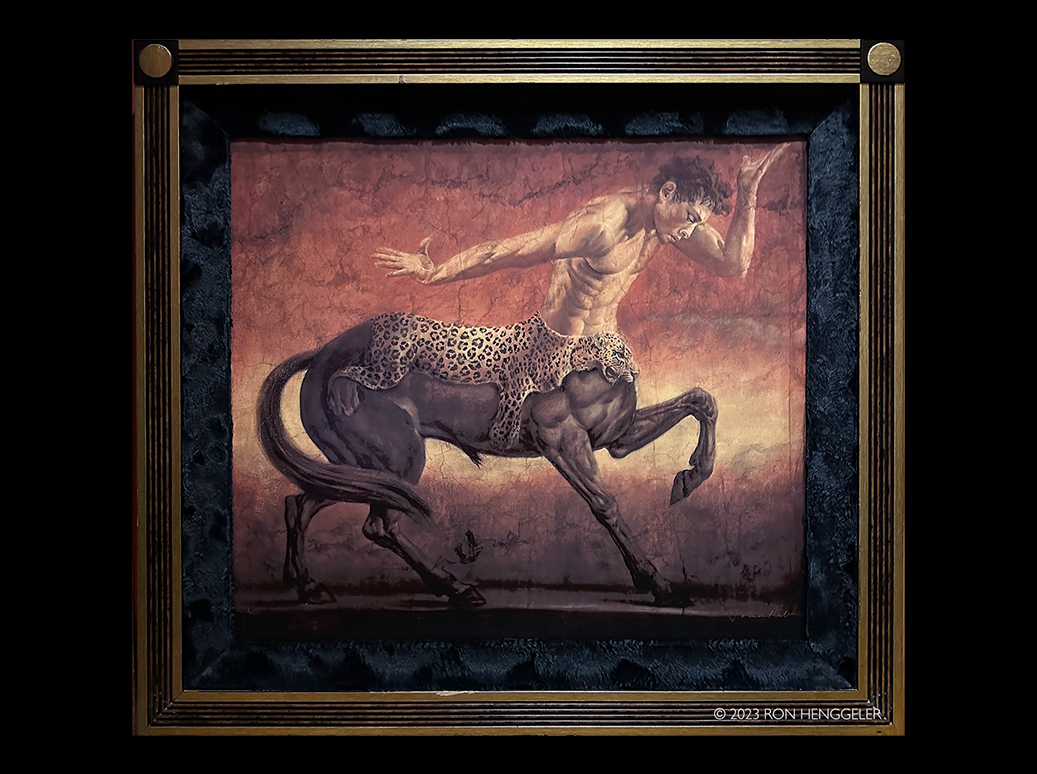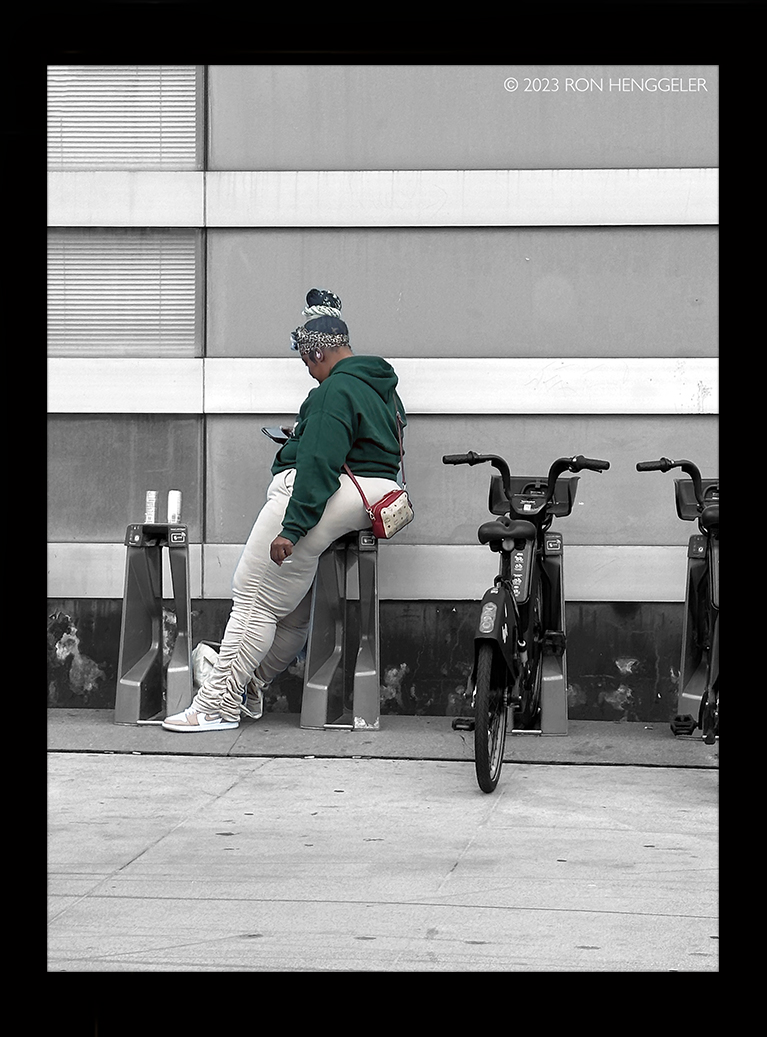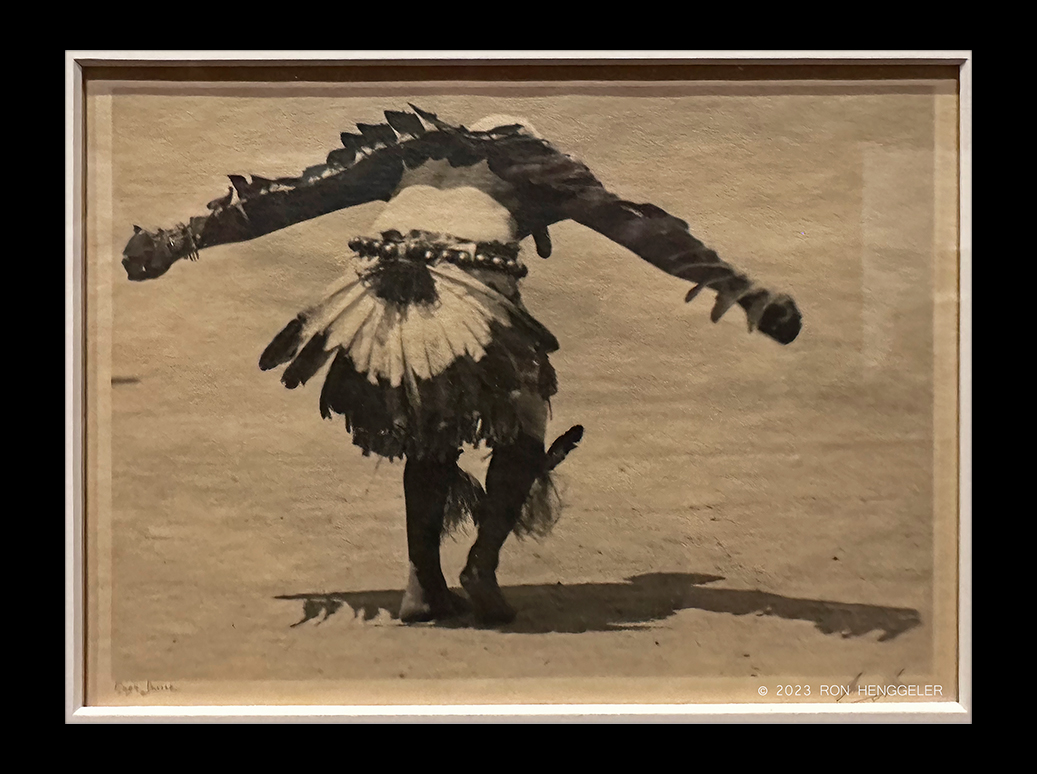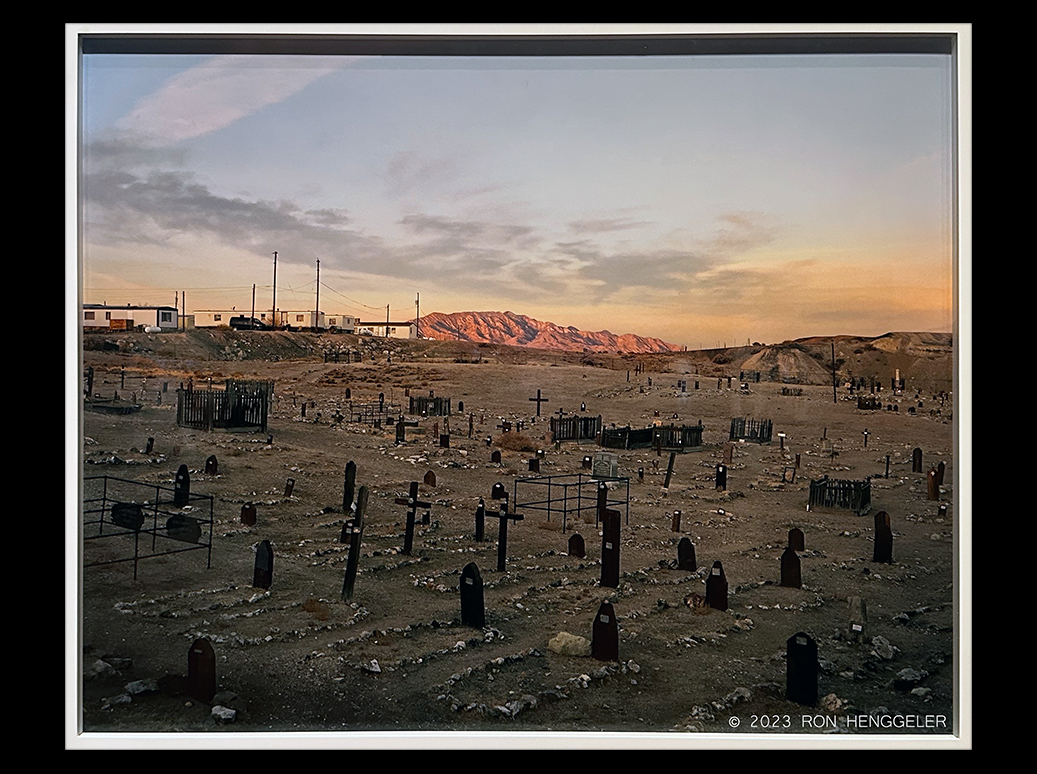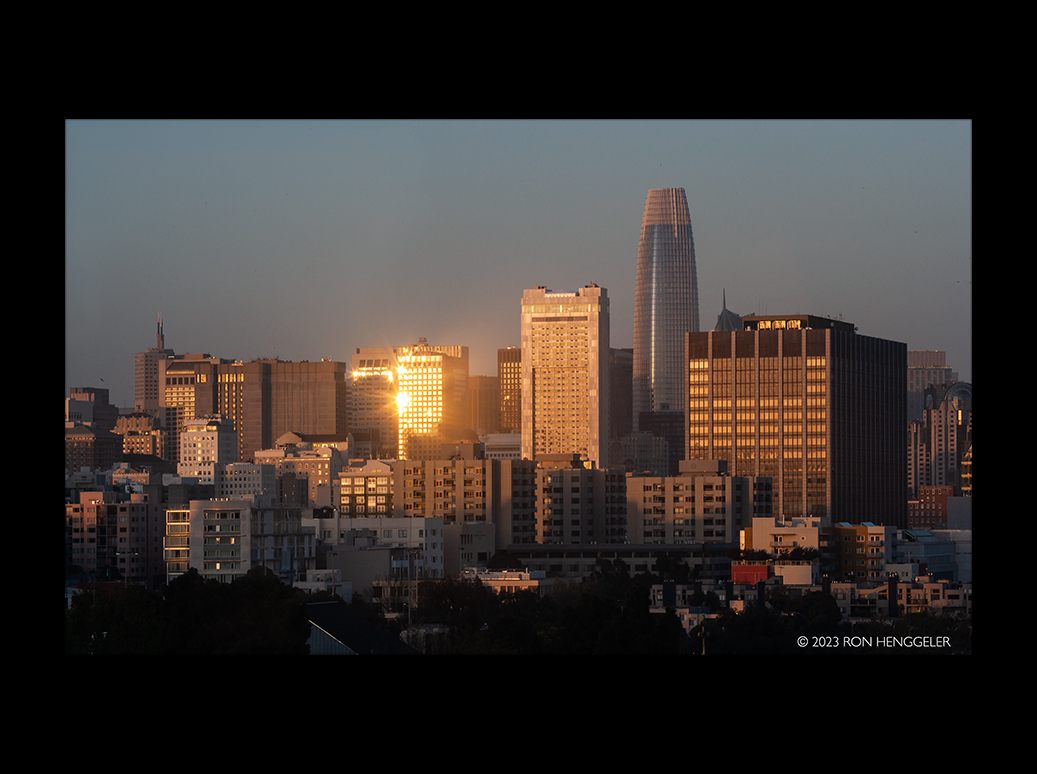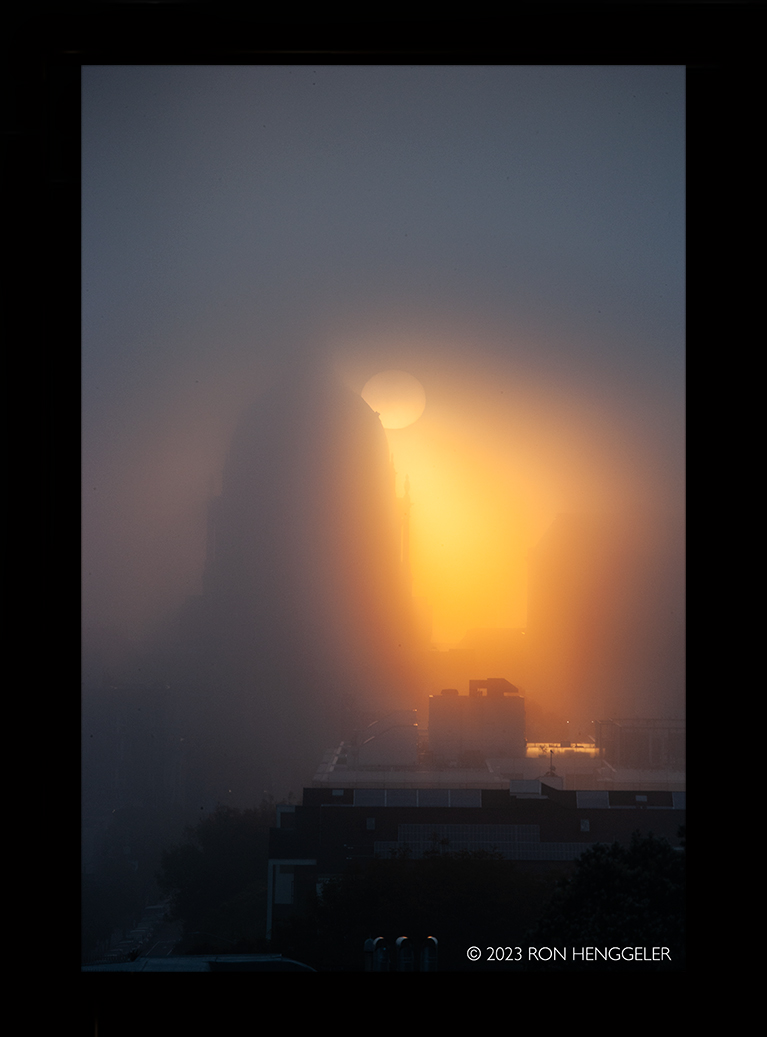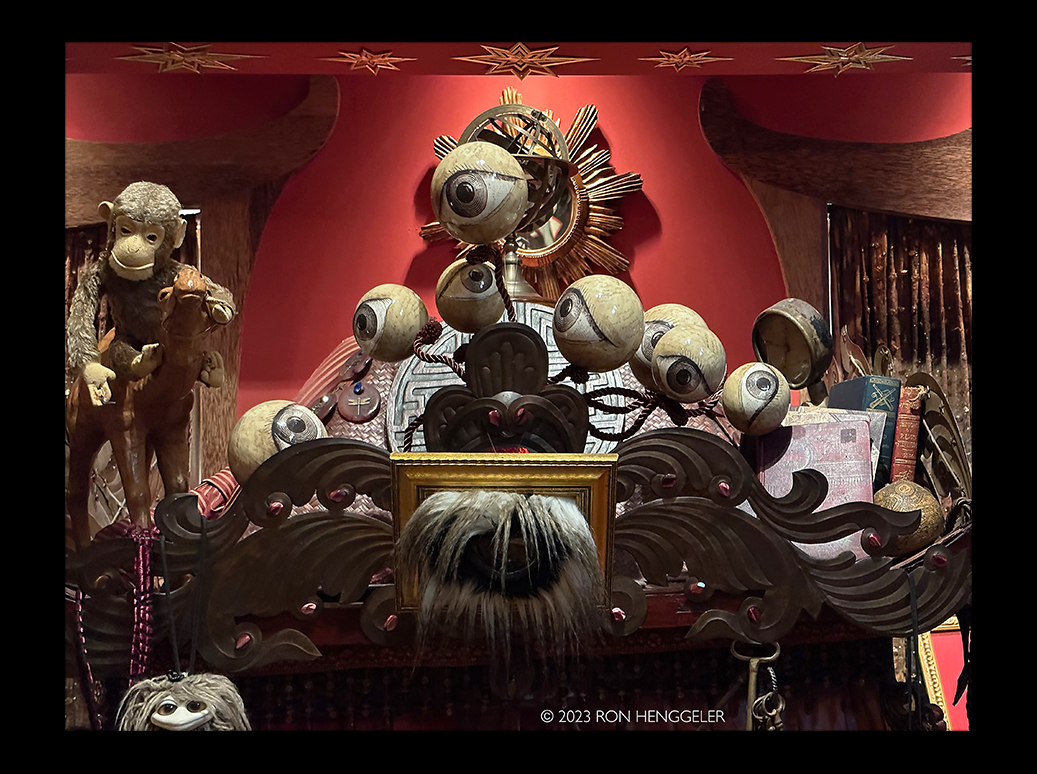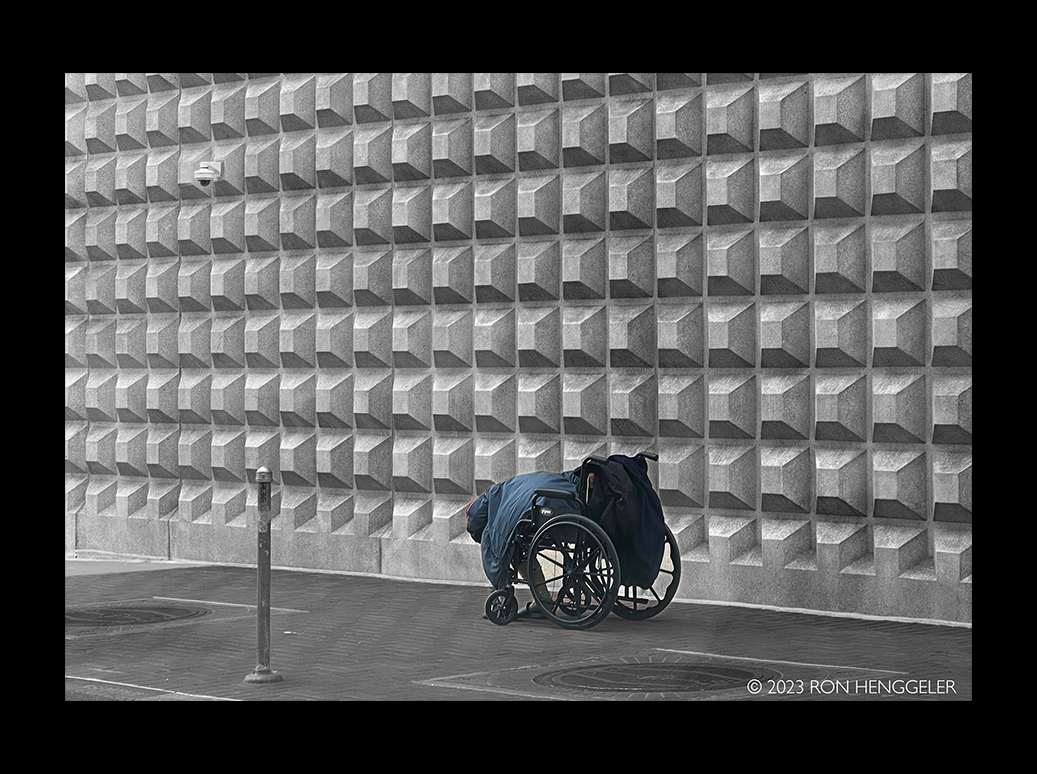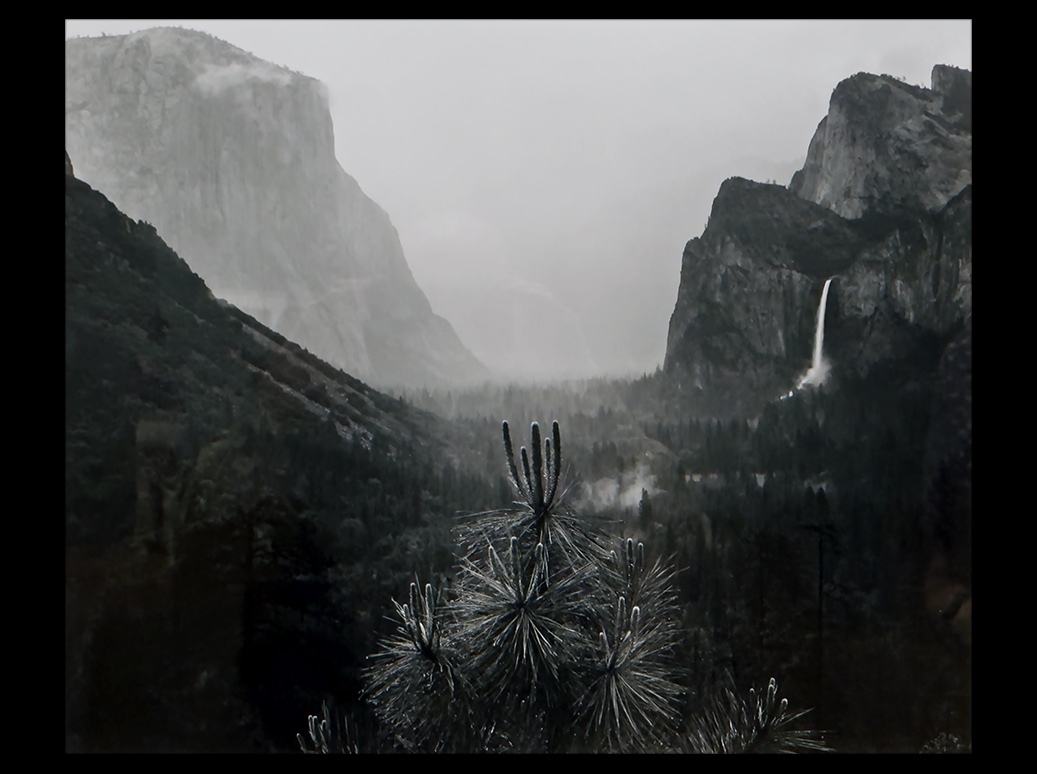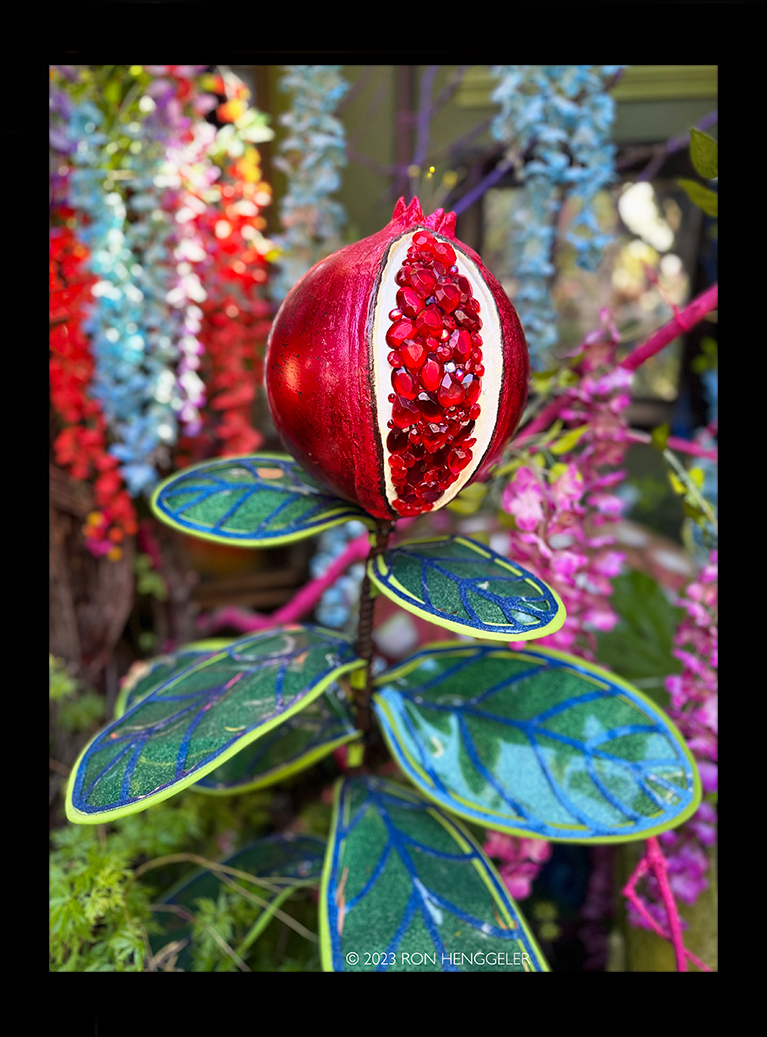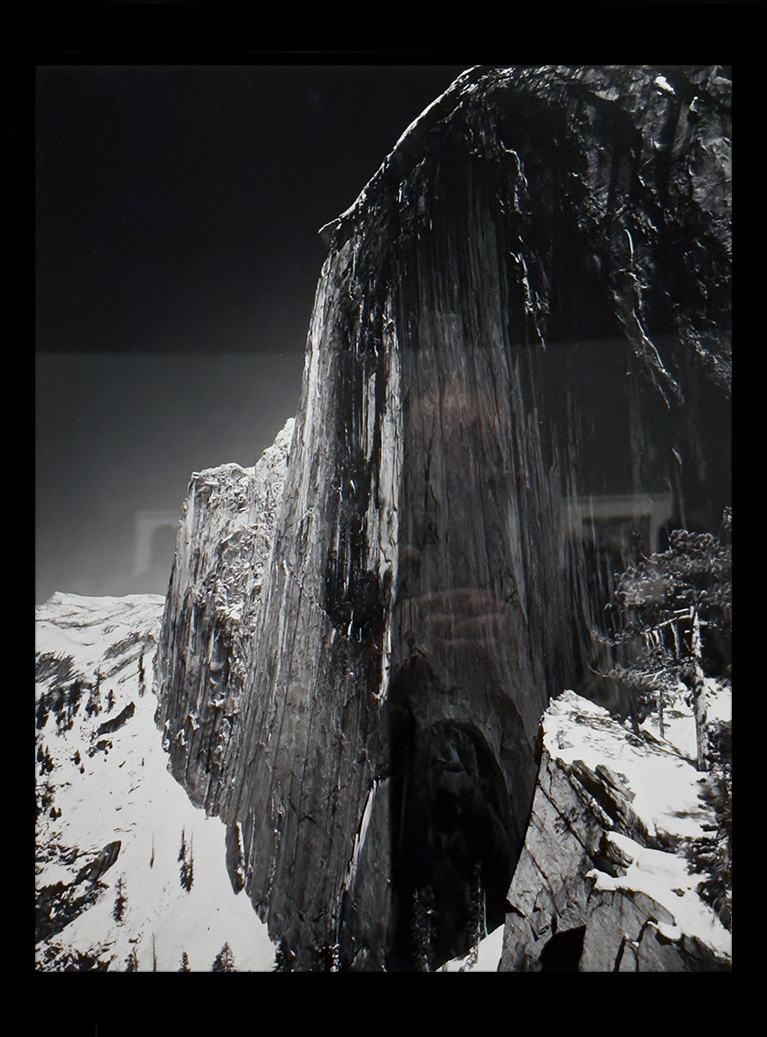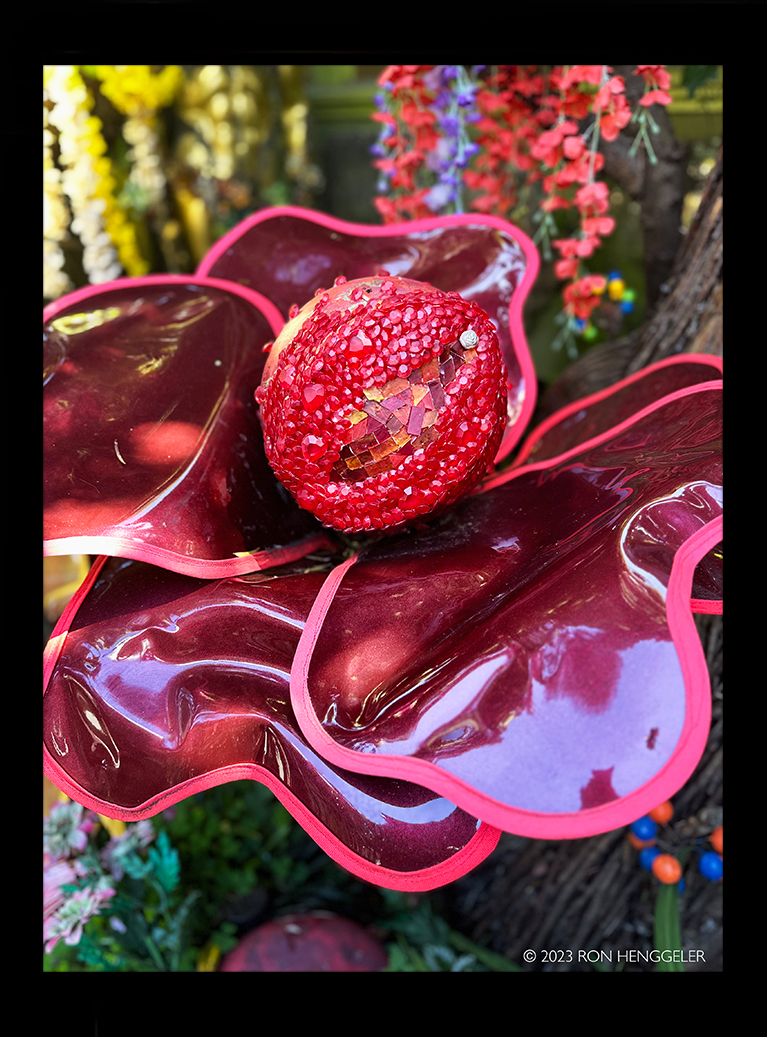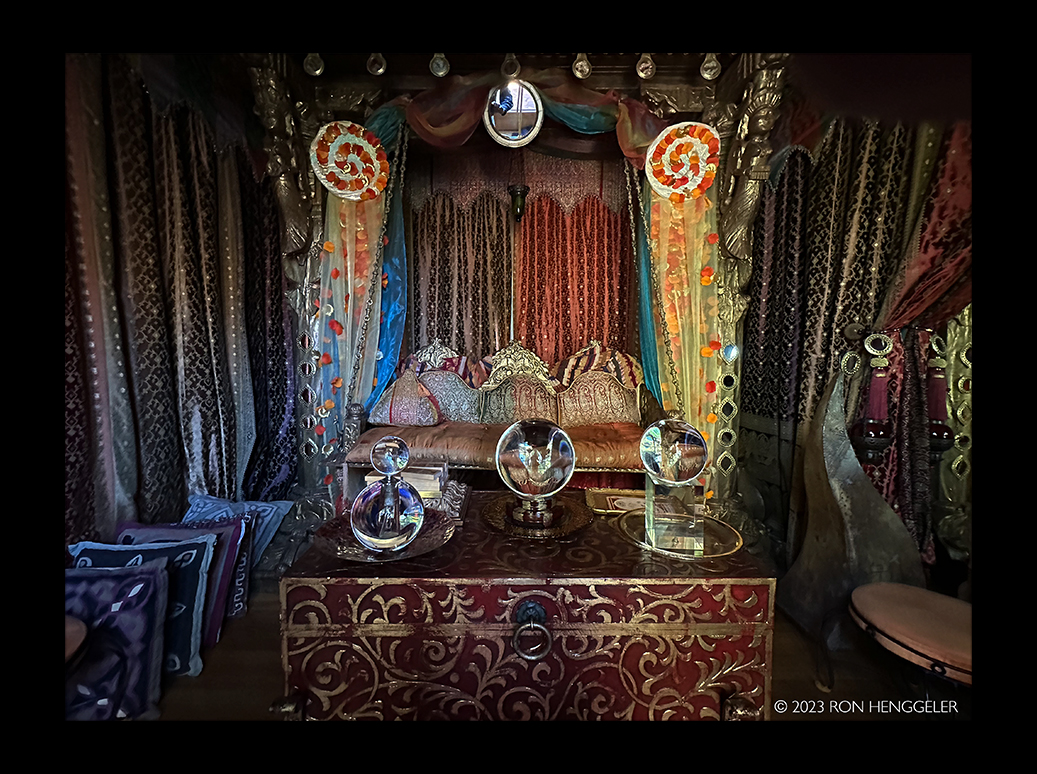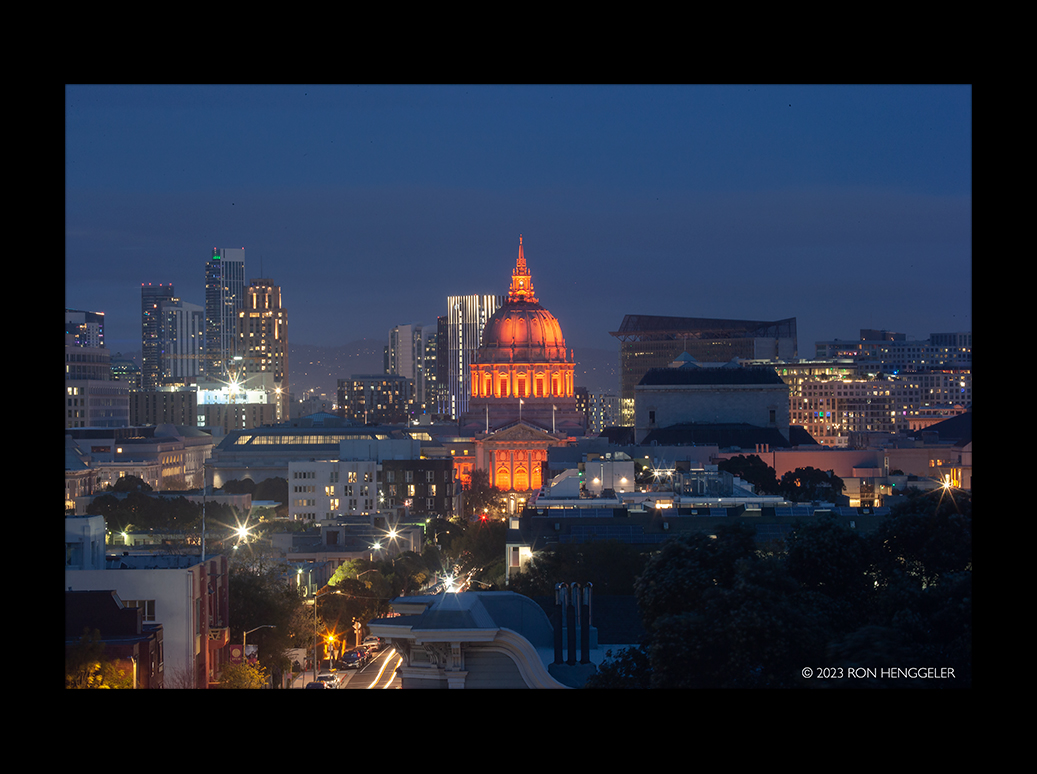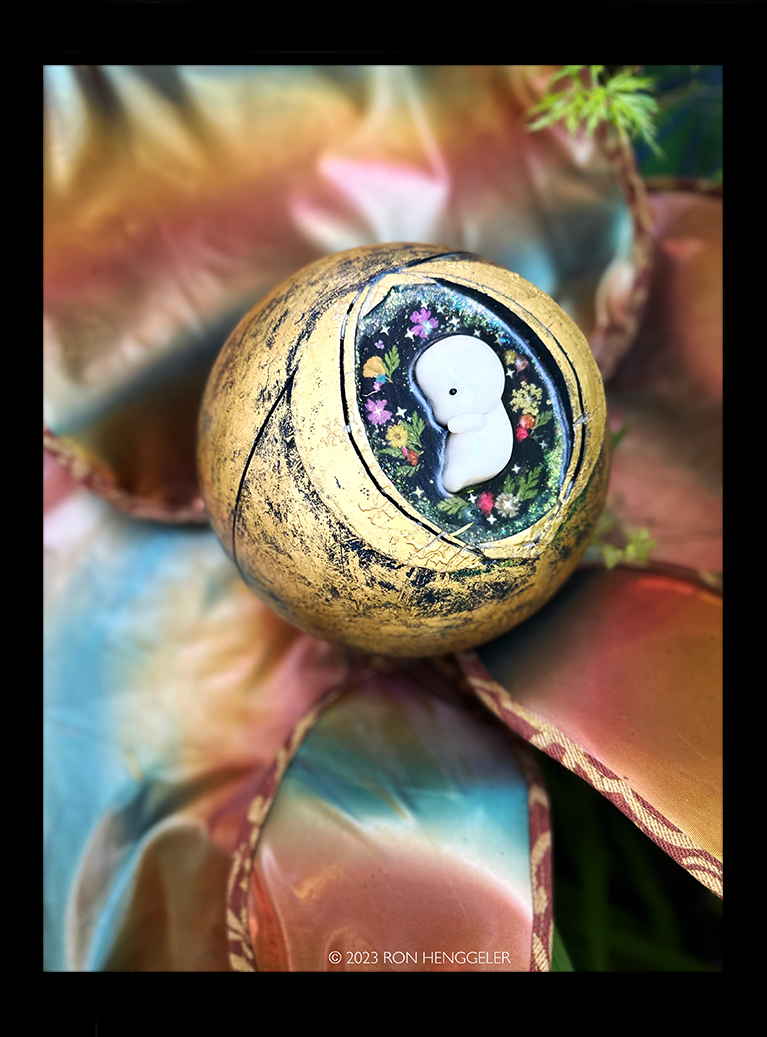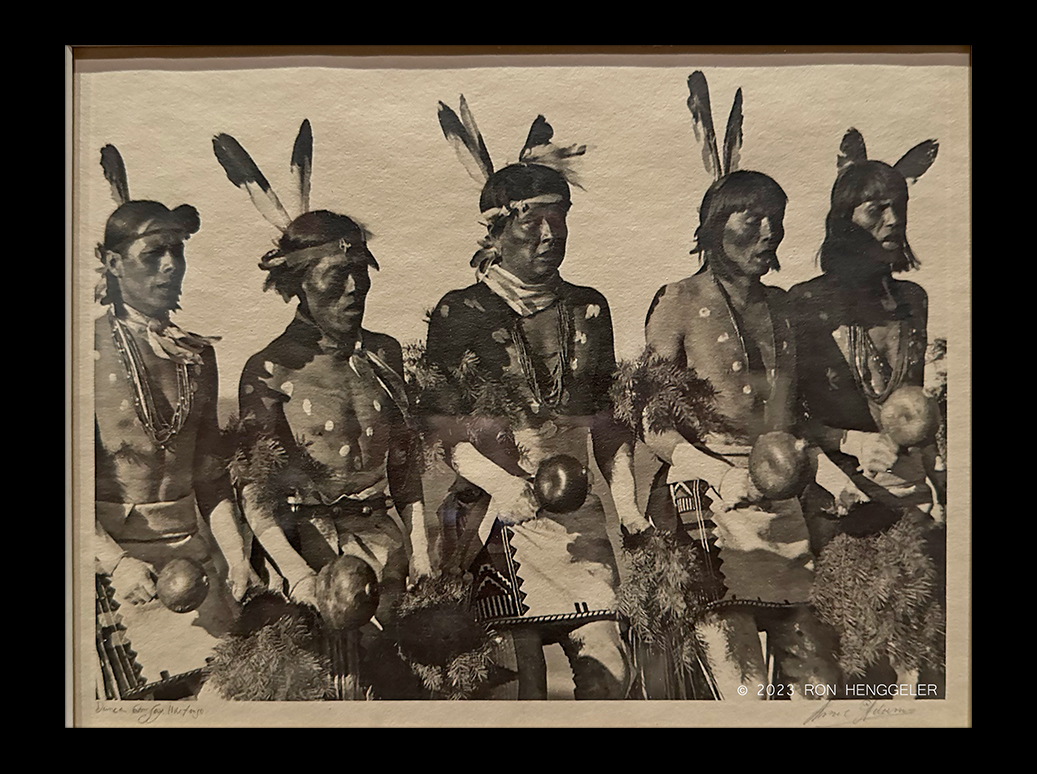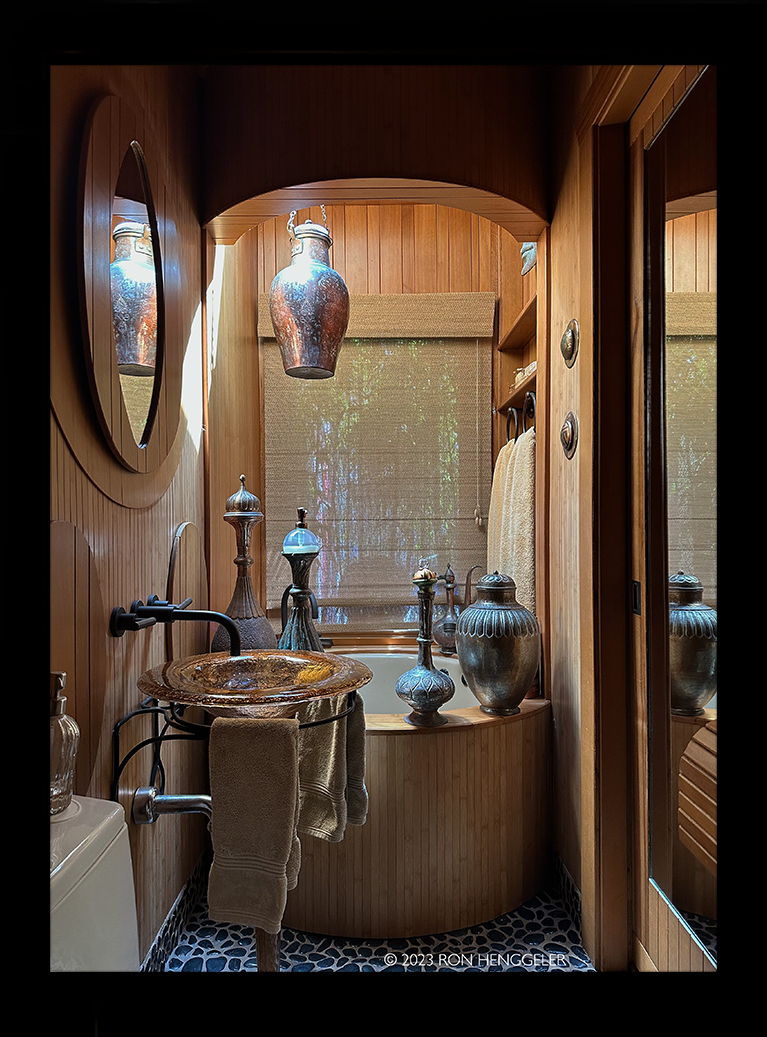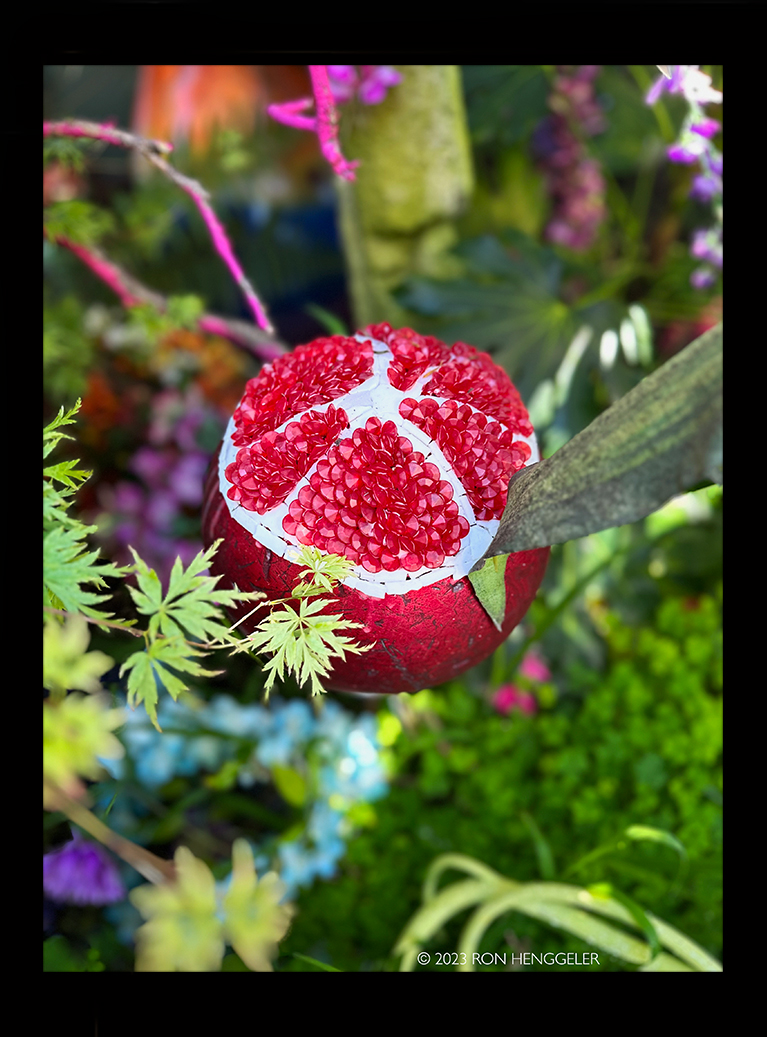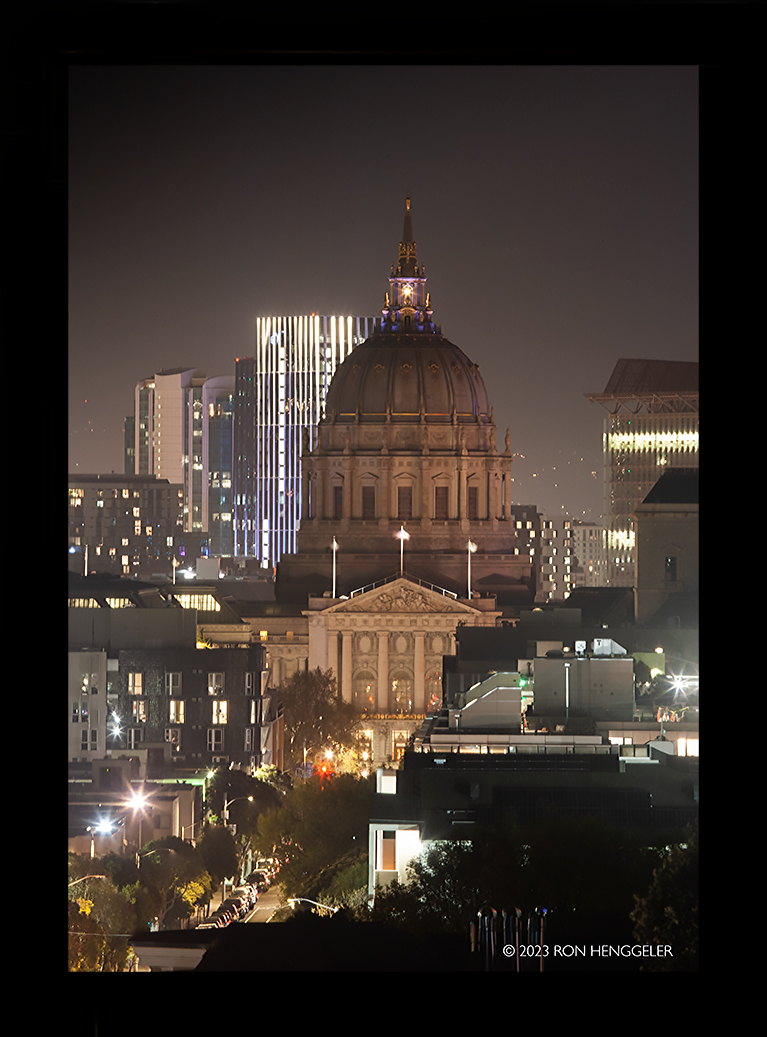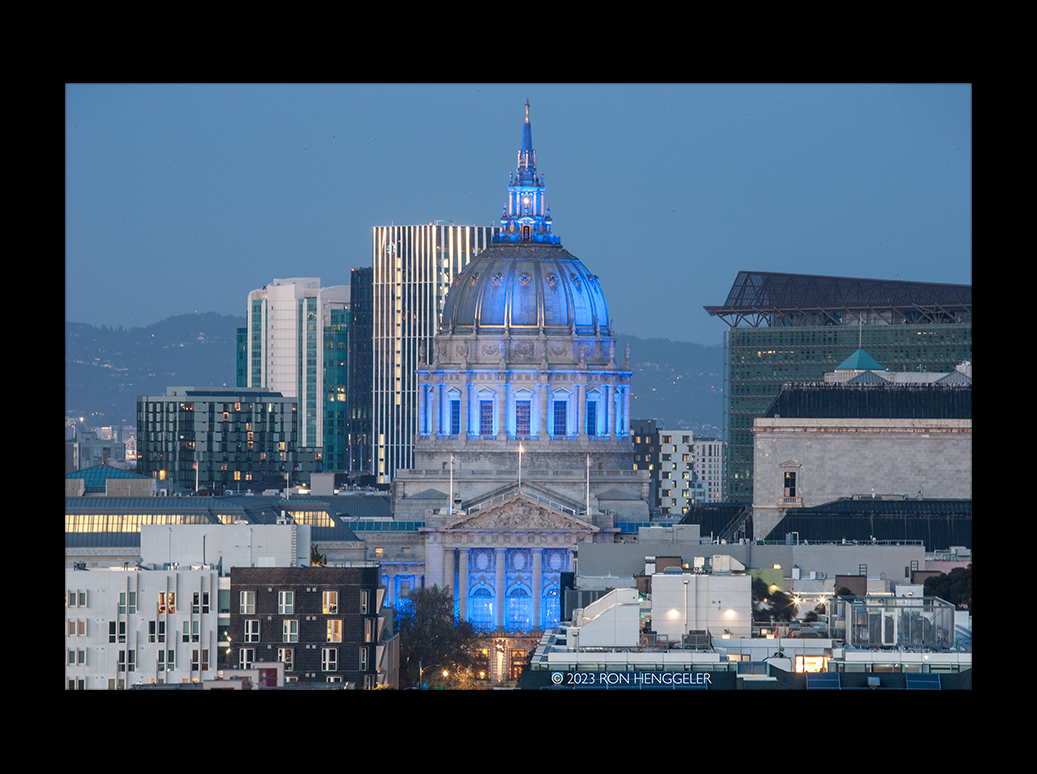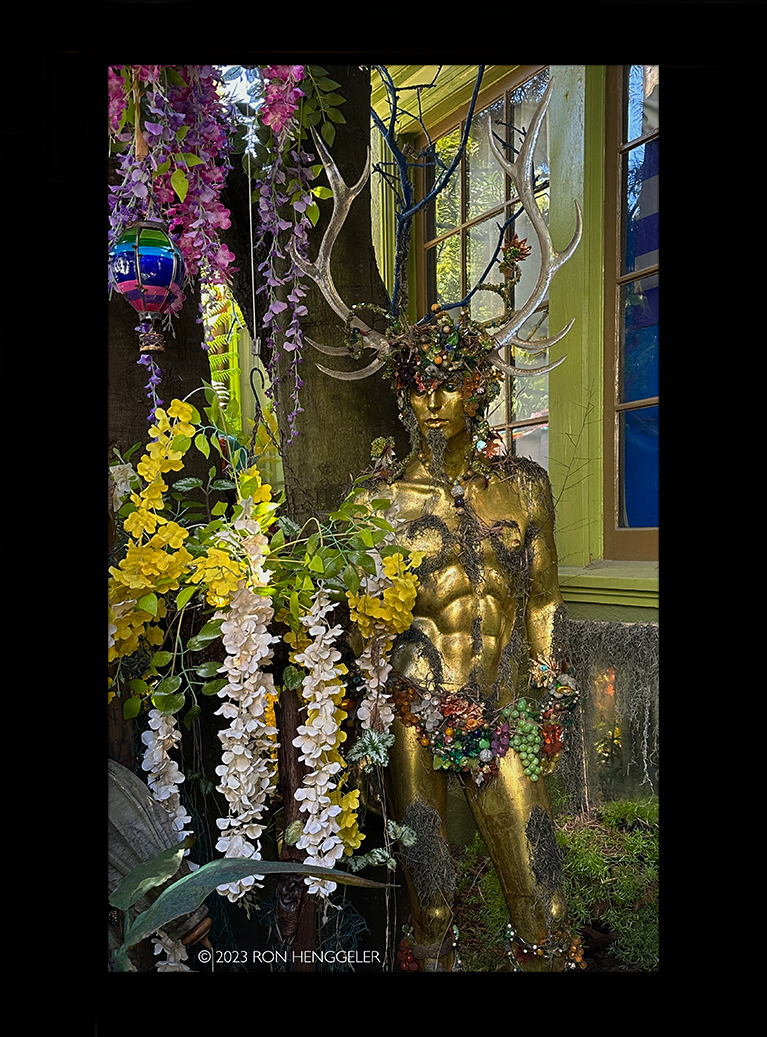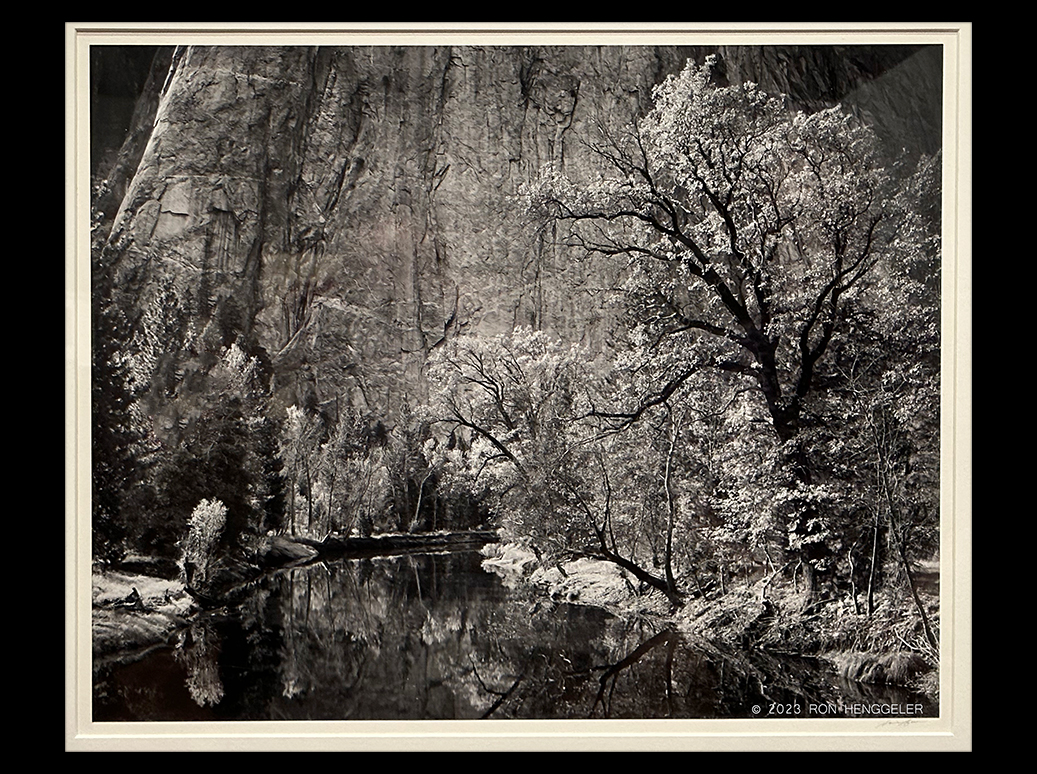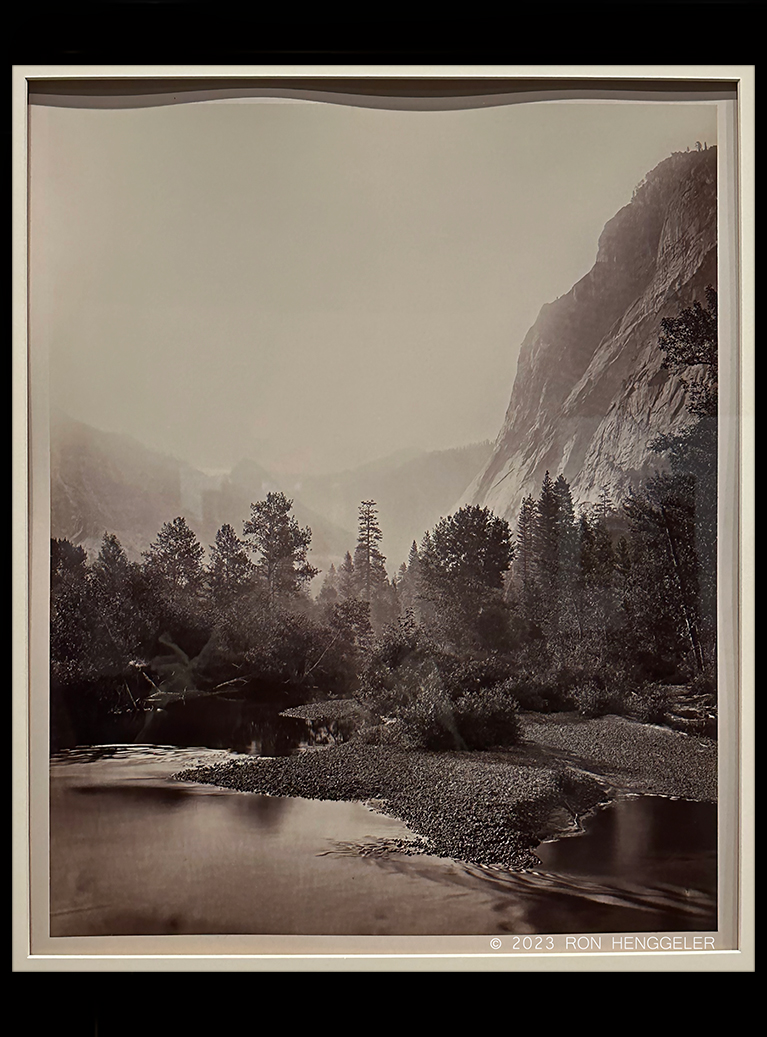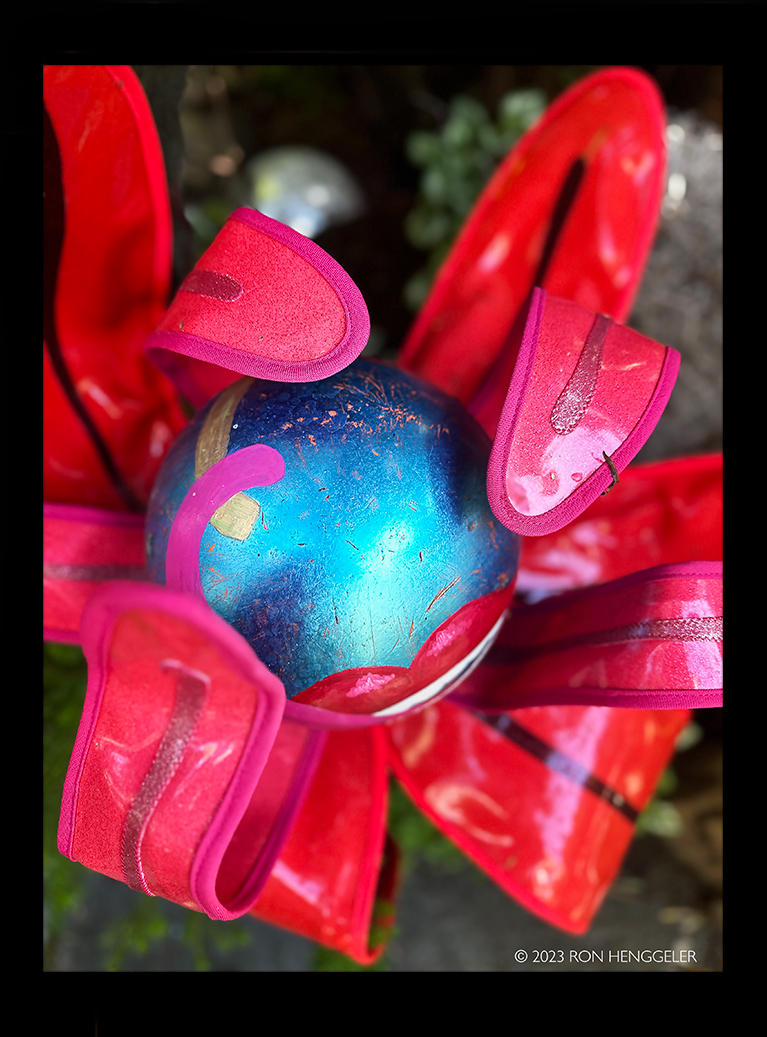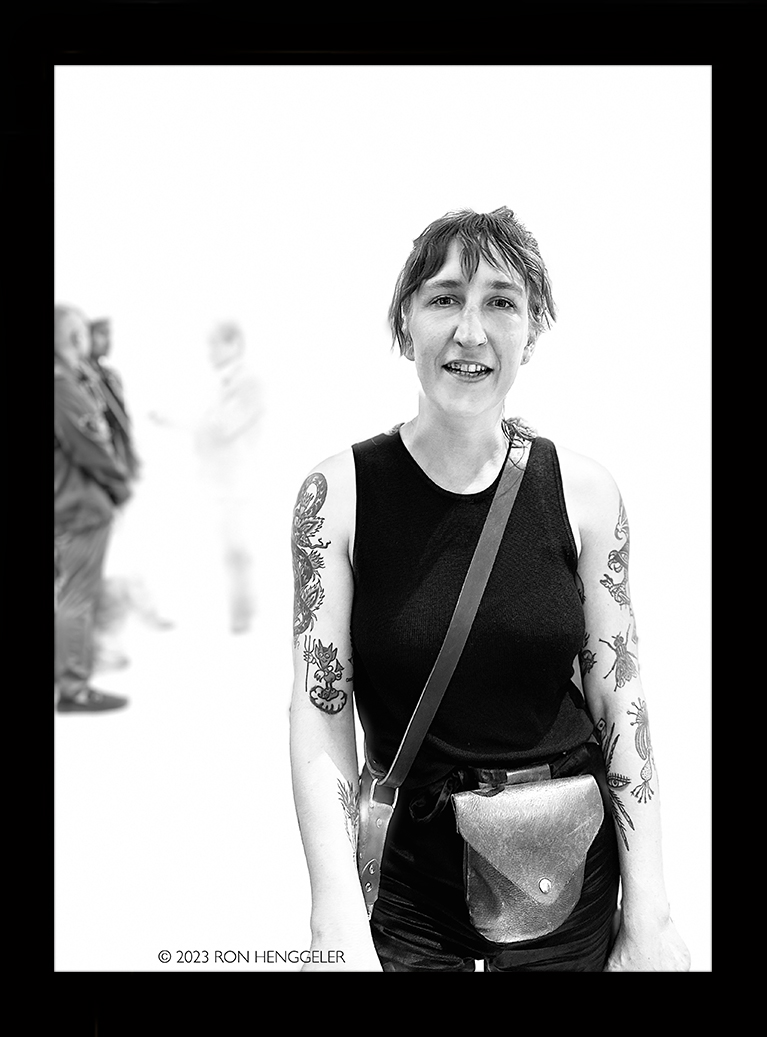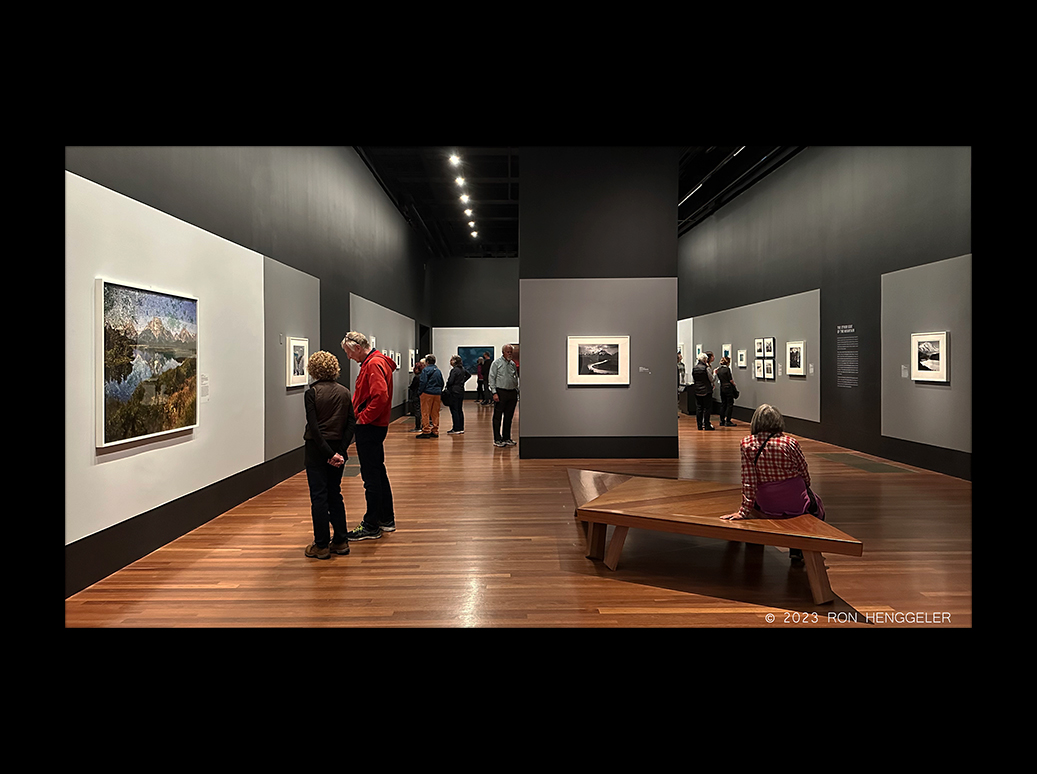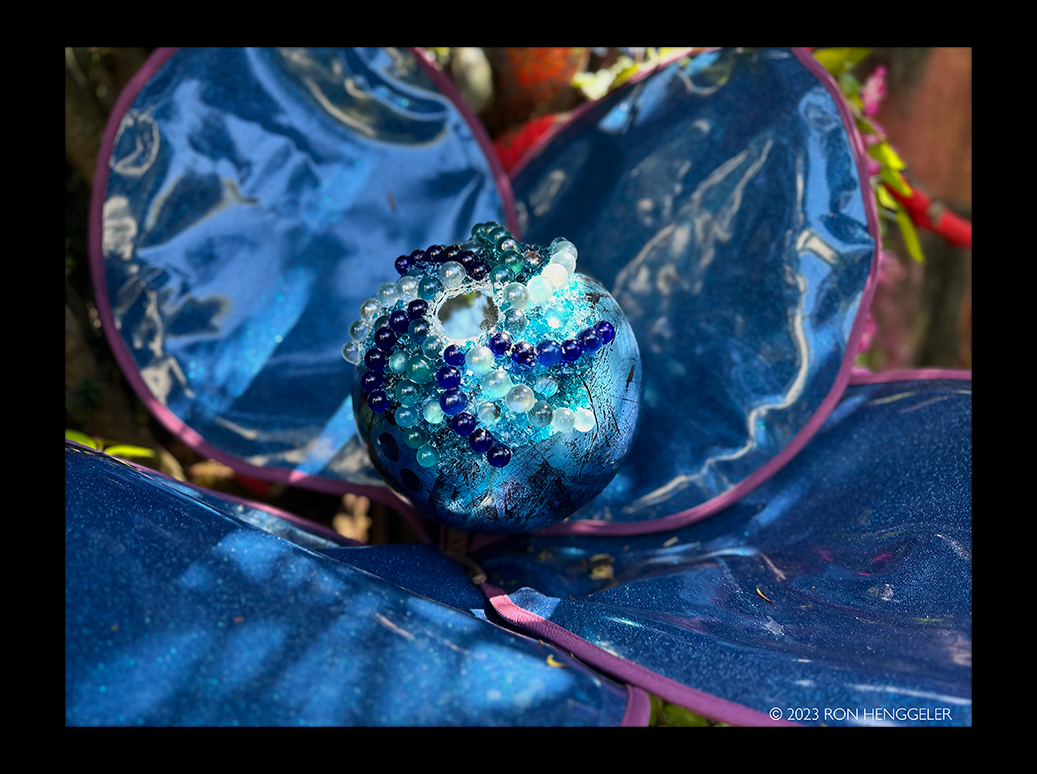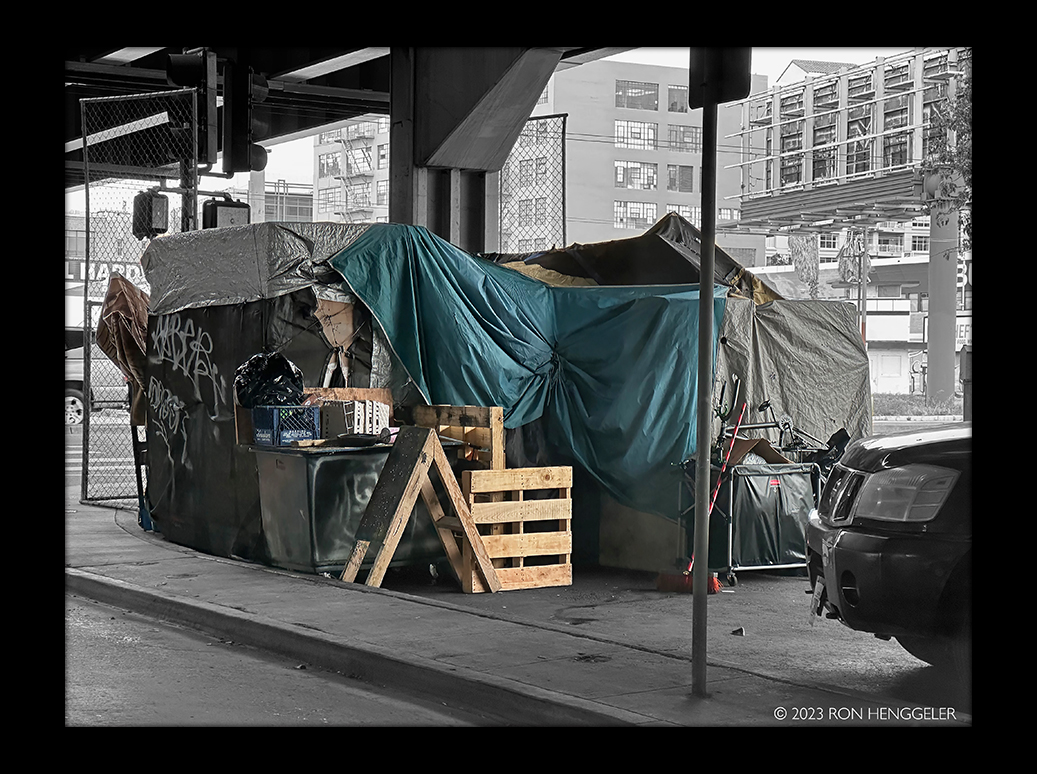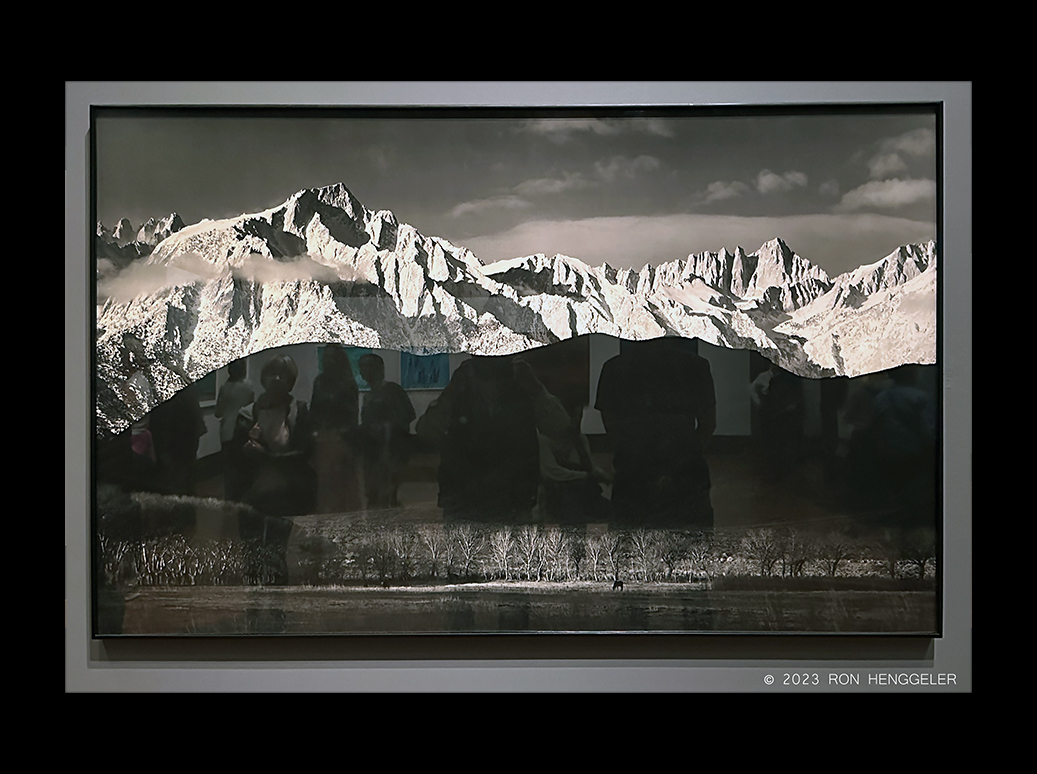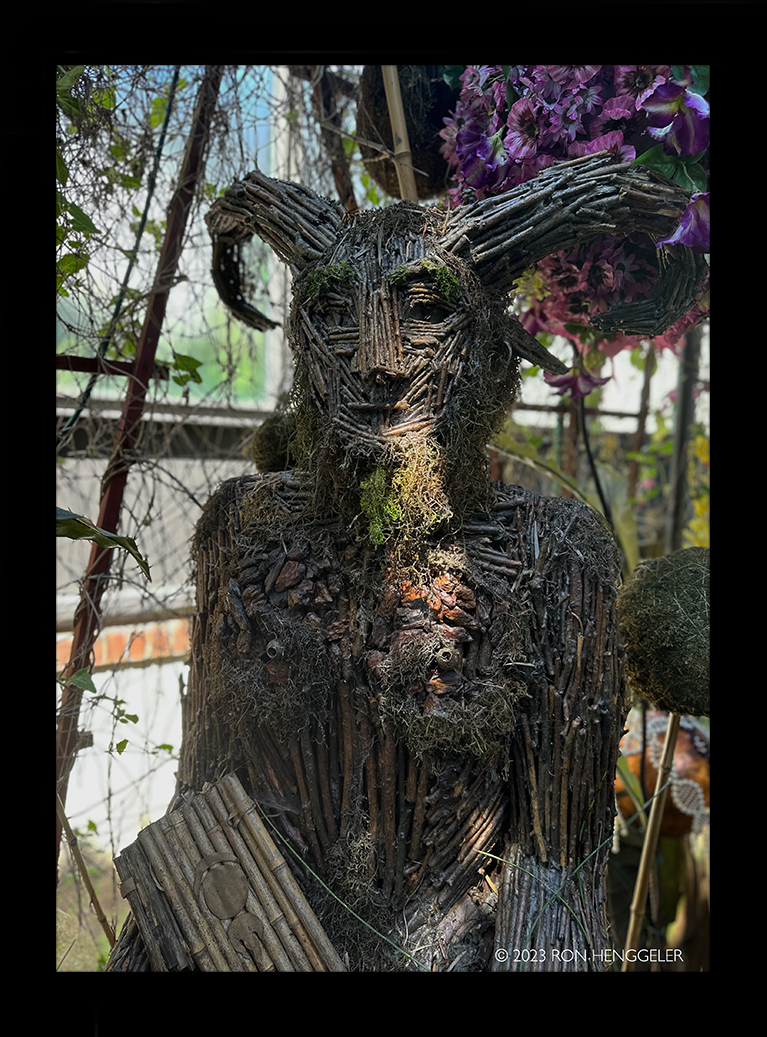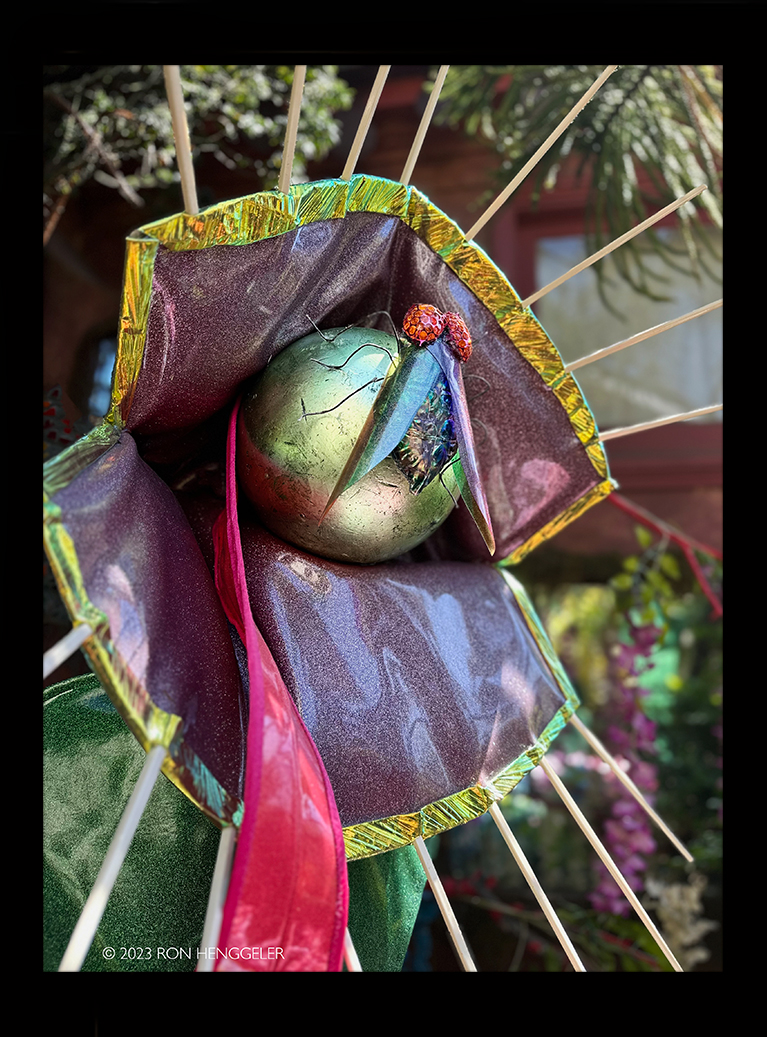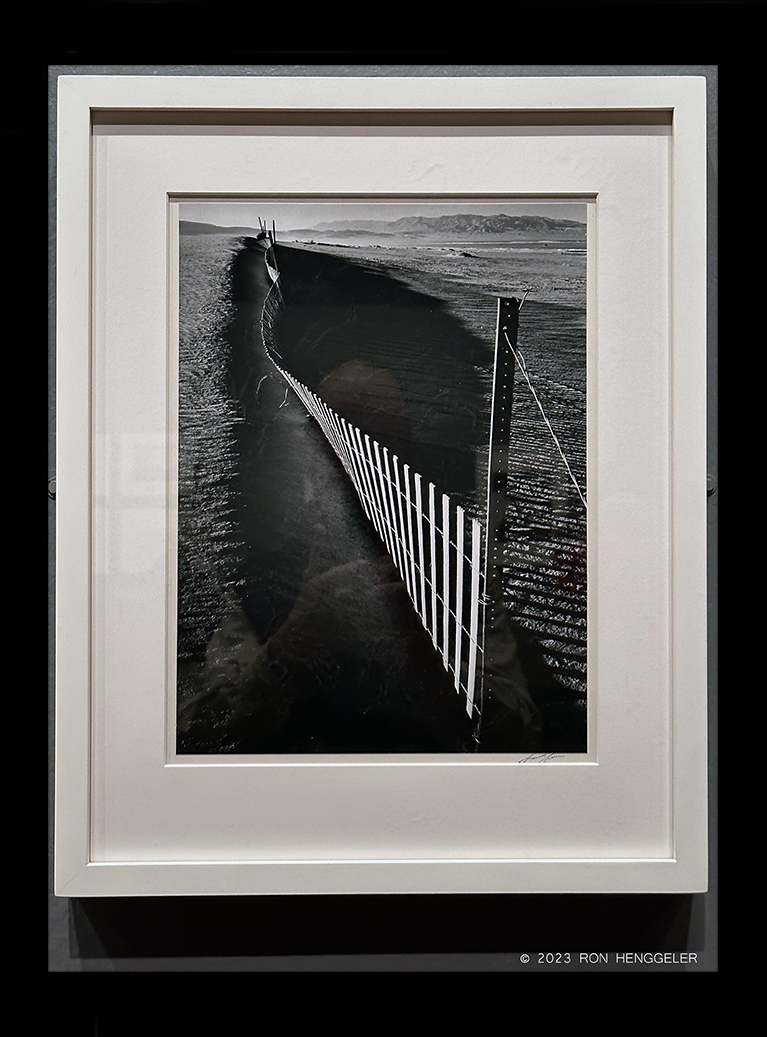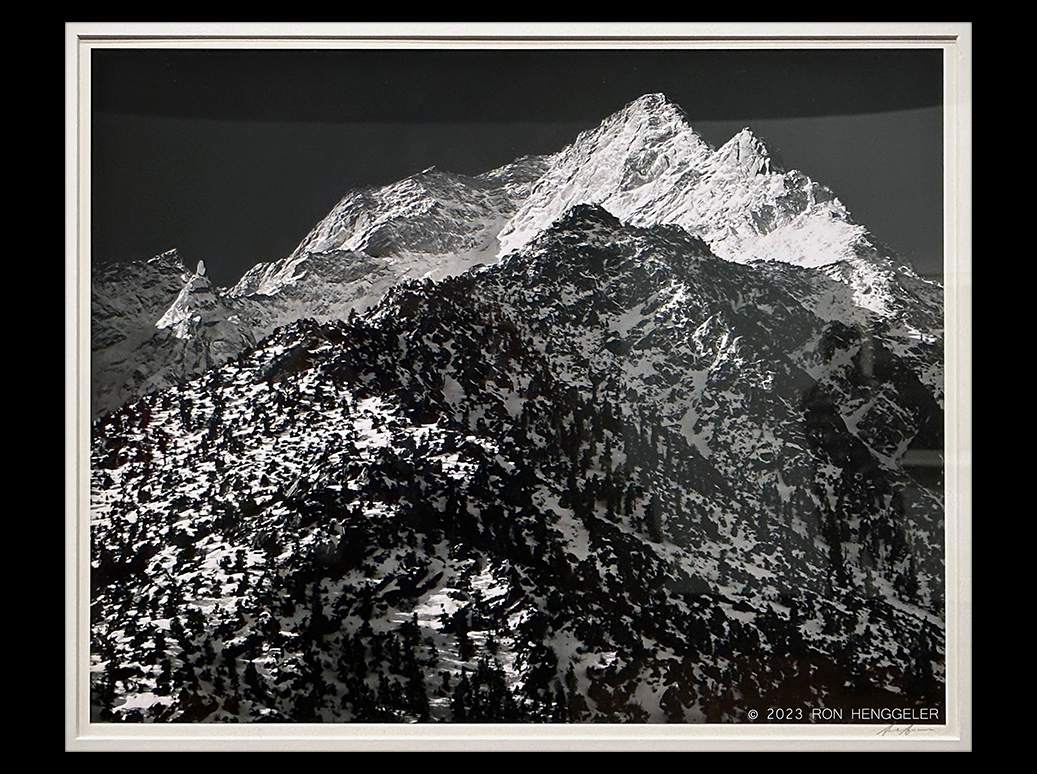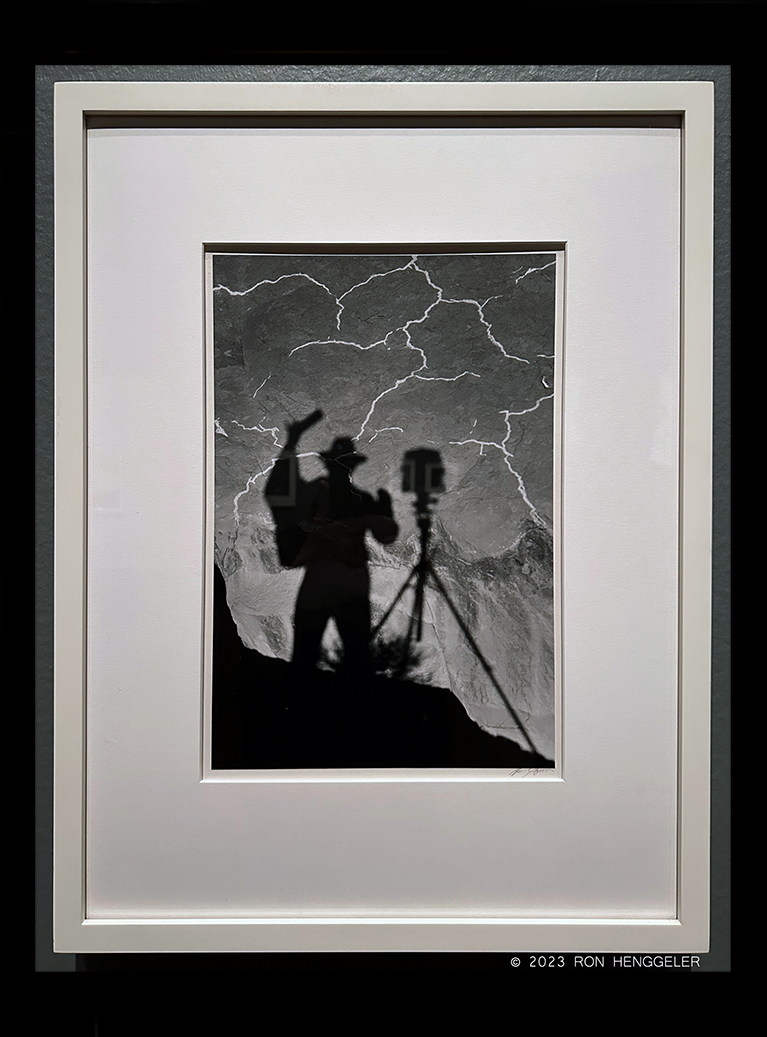| |
May 15, 2023
Ansel Adams at the de Young, bowling balls at the Gregangelo Museum, life on the streets of SF |
|
| |
|
|
| |
Ansel Adams at the De Young
ANSEL ADAMS IN OUR TIME
For many viewers, Ansel Adams' photographs of the western United States have become visual embodiments of the sites he captured.
Combining technical mastery with a modernist sensibility, Adams' works center his deep connection to the natural environment. This connection continues to resonate in new ways today, as the landscape around us experiences the ongoing effects of climate change.
This is an exhibition about legacy. In these galleries, more than one hundred of Adams' works have been placed in a new, dual conversation that includes both the nineteenth-century photographers who preceded him in the American West and the contemporary photographers reframing some of the same places and environmental issues. This context invites viewers to reevaluate Adams' influence on Western concepts of landscape and the urgency with which it must be protectea.
Born in San Francisco, Adams (1902-1984) first picked up a camera in California's Yosemite National Park at age fourteen. He returned to the park virtually every year, and perhaps no other place had a more lasting influence on the photographer. In Yosemite, he both honed his skills and came to recognize photography's ability to depict the natural world as a source of spiritual renewal.
|
|
|
|
| |
Sunrise and the fog |
|
| |
|
|
|
| |
|
|
| |
|
|
|
| |
Mission at 11th Street |
|
| |
|
|
|
| |
Ansel Adams
(American, 1902-1984)
Rain, Yosemite Valley, California, ca. 1940
Gelatin silver print
Museum of Fine Arts, Boston, The Lane Collection, 2018.2736
Like Clearing Winter Storm, this photograph features what the nineteenth-century photographer Carleton E.
Watkins described as "the best general view" of Yosemite Valley, with the massive granite outcropping of El Capitan on the left and the silvery stream of Bridalveil Fall visible on the right. Yet here Yosemite's famous features are shrouded in mist, and the pine tree in the foreground, its needles glistening with rain, stands in place of the distant peaks. |
|
| |
|
|
|
| |
A bowling ball transformation in the garden at The Gregangelo Museum |
|
| |
|
|
|
| |
|
|
| |
|
|
|
| |
Home sweet home in San Francisco |
|
| |
|
|
|
| |
Ansel Adams
(American, 1902-1984)
Monolith The Face of Half Dome, Yosemite National Park, 1927, printed 1950-1960
Gelatin silver print
Museum of Fine Arts, Boston, The Lane Collection, 2018.2741
This majestic view of Half Dome is one of Ansel Adams' most important and groundbreaking early photographs.
Shot on a hike in the spring of 1927, it represents his first conscious "visualization" an image fully anticipated before he tripped the shutter, and one that for Adams captured the emotional impact of the scene. He made this enlarged print years later, but the dramatic sky and the sharp contrast between the brilliant white snow and dark ridges in the granite were recorded in 1927 when Adams took the photograph, using a deep red filter and a long exposure (made possible by the windless conditions that day). |
|
| |
|
|
|
| |
A bowling ball transformation in the garden at The Gregangelo Museum |
|
| |
|
|
|
| |
Benjamin |
|
| |
|
|
|
| |
Alice (in Wonderland) |
|
| |
|
|
|
| |
|
|
| |
|
|
|
| |
|
|
| |
|
|
|
| |
Ansel Adams
(American, 1902-1984)
Dance Group, San Ildefonso Pueblo, New Mexico, 1929
Gelatin silver print
Museum of Fine Arts, Boston, The Lane Collection, 2018.2367
"This photo of Cloud Dance (Po-Who-Geh-Owingeh) was taken at a time when there was an influx of tourists; .archaeologists, anthropologists, artists, and photographers who were intrigued by Pueblo people. At the time, Pueblo people and other Native Americans in the Southwest were trying to navigate the outsiders who were interested in their culture. Some of them did not quite understand the circumstances surrounding the curiosity, while others did understand the extractive nature, and they had to weigh that in terms of their other needs. I get questions from members of my community about why they did not chase the archaeologists and photographers out, and I often respond it is because of the uneven power relations between Indigenous and non-Native people at the time." |
|
| |
|
|
|
| |
Orange-lit City Hall in recognition of SF Giants Opening Day
April 7, 2023 |
|
| |
|
|
|
| |
Van Ness Avenue near Market Street |
|
| |
|
|
|
| |
A bowling ball transformation in the garden at The Gregangelo Museum |
|
| |
|
|
|
| |
Mitch Epstein
(American, b. 1952)
Altamont Pass Wind Farm, California, from the series American Power, 2007
Chromogenic print
Courtesy of the artist and Yancey Richardson Gallery, Mill Valley, California
Mitch Epstein's American Power series investigates energy in its many forms by exploring how we create and consume it, as well as its impact on our daily lives.
Often employing a bird's-eye view and printed on a very large scale, Epstein's photographs like these showing oil drilling, wind turbines, desert irrigation, and suburban sprawl call into question the very definition of power and point to our shared accountability for the abuse of our natural resources. In a world in which we are constantly inundated with photographs, these densely detailed views are also meant to slow down our"reading"of the images and remind us that each may be interpreted in a variety of ways. |
|
| |
|
|
|
| |
Van Ness Avenue and Turk Street |
|
| |
|
|
|
| |
Ansel Adams
(American, 1902-1984)
Indian Dance, San lIdefonso Pueblo, New Mexico, 1929
Gelatin silver print
Museum of Fine Arts, Boston, The Lane Collection, 2018.2372
This is a Cloud Dance (Po-Woh-Geh-Owingeh), and the person that is second from the right is my great-grandfather Joe Aguilar. This cultural observance is a spring ceremony for special occasions where rain, the landscape, and cosmology are centered. As Pueblo people, we hold the importance of water in all of its forms. The image seen here does not speak to this. It is a snapshot of a very specific time, and speaking with someone like my grandfather would reveal a deeper. meaning. In many ways, the photograph is out of context because it is on a museum wall and it is in black and white, making it a 2-D image of a vibrant and meaningful ceremony. Getting to that deeper meaning would entail talking to a community member" Joseph Aguilar (San lIdefonso Pueblo) |
|
| |
|
|
|
| |
|
|
| |
|
|
|
| |
Stephen |
|
| |
|
|
|
| |
10th Street near the Twitter Building on Market |
|
| |
|
|
|
| |
A bowling ball transformation in the garden at The Gregangelo Museum |
|
| |
|
|
|
| |
City Hall from my upstairs window |
|
| |
|
|
|
| |
Ansel Adams
(American, 1902-1984)
Eagle Dance, Tesuque Pueblo, New Mexico, 1929
Gelatin silver prints
Museum of Fine Arts, Boston, The Lane Collection, 2018.2371; 2018.2376
In the summer of 1929, Ansel Adams told Mary Austin, his collaborator on the Taos Pueblo book, that he made some "stunning" Pueblo dance negatives during visits to San Ildefonso and Tesuque. He considered creating a
-portfolio of ceremonial dance photographs, but it was never realized. While Indigenous dances were often crowded with tourists by the 1920s, Adams cropped out all signs of casual bystanders in his images, as if to return these occasions to the sacred community rituals they originally were. |
|
| |
|
|
|
| |
At dusk, the Blue-lit City Hall in recognition of the 20th anniversary of the International Ocean Film Festival at Fort Mason
April 13-16, 2023 |
|
| |
|
|
|
| |
|
|
| |
|
|
|
| |
Fillmore at Ellis |
|
| |
|
|
|
| |
A bowling ball transformation in the garden at The Gregangelo Museum |
|
| |
|
|
|
| |
Ansel Adams
(American, 1902-1984)
Merced River, Cliffs of Cathedral Rocks, Autumn, Yosemite National Park, 1939
Gelatin silver print
Museum of Fine Arts, Boston, The Lane Collection, 2018.2712
This image calls to mind the statement by the Museum of Modern Art's former photography curator John Szarkowski about Ansel Adams' work: "When you look at a good Ansel Adams photograph, you think you know the temperature, the relative humidity, the month." Merced River, Cliffs at Cathedral Rocks, Autumn shows how Adams was able to capture shimmering light and atmospheric conditions despite the inherent constraints of working in black and white. |
|
| |
|
|
|
| |
In the Fillmore |
|
| |
|
|
|
| |
Carleton E. Watkins (American, 1829-1916)
Mount Starr King and Glacier Point, Yosemite, No. 69, 1865-1866
Albumen print
Museum of Fine Arts, Boston, Ernest Wadsworth Longfellow Fund,
2006, 2006.847
Carleton E. Watkins took this photograph from the floor of Yosemite Valley while working for the California State Geological Survey in the mid-1860s. It is a more intimate and less sweeping view than the photograph Watkins self-described as the "best general view of Yosemite" which presents the most recognizable features of the landscape.
Mount Starr King, the distant peak at center, was named for Thomas Starr King, the Unitarian minister from Boston whose life and ministry were powerfully influenced by his experiences in the Yosemite wilderness. Ansel Adams later shared his "disregard for the naming of things and [his skepticism] of those nonprofessionals who go through the wilderness classifying and labeling everything in sight." |
|
| |
|
|
|
| |
|
|
| |
|
|
|
| |
A bowling ball transformation in the garden at The Gregangelo Museum |
|
| |
|
|
|
| |
Bryan Schutmaat (American, b. 1983)
Tonopah, NV, 2012
Inkjet print
Museum of Fine Arts, Boston, Gift of Jessie H. Wilkinson-Jessie H. Wilkinson Fund. 2018. 2018.2259
Cemetery, Tonopah, NV, 2012
Inkjet print
Courtesy of the artist
These Nevada landscapes are from Grays the Mountain Sends, a series that depicts the landscapes, structures, and residents of former mining towns. Bryan Schutmaat seeks out these far-flung mountain communities, now mostly abandoned due to the loss of their mineral wealth.
Not unlike Ansel Adams' fleeting view of Hernandez, New Mexico, first seen in his rearview mirror, Schutmaat's vision is that of an extended road trip. And like Adams, he is drawn to the methodical way that his large-format camera forces him to work. He waits patiently for the changing light to activate a scene. For Schutmaat, each town's deserted structures and lonely inhabitants stand as last "relics of hope" and proof of the tragic demise of the American dream. The fragile, hardscrabble beauty of these modern-day ghost towns is also a powerful reminder of the region's uncertain future and its long history of economic booms and busts. |
|
| |
|
|
|
| |
|
|
| |
|
|
|
| |
The Safeway parking lot in the Fillmore |
|
| |
|
|
|
| |
PICTURING THE NATIONAL PARKS
Photography played a critical role in the establishment of the national parks. The dramatic views made by Carleton E. Watkins and other nineteenth-century photographers ultimately helped convince government officials to protect Yosemite and Yellowstone from private development. However, the formation of the national parks further dispossessed Indigenous people of their ancestral lands by overlooking their ongoing stewardship of the land and restricting their access to it.
Although Ansel Adams claimed he never intentionally made a creative photograph that related directly to an environmental issue, he was aware of an image's power to sway opinions on conservation. Adams' photographs of King's River Canyon helped the Sierra Club successfully campaign to establish the site as a national park. Over the following years, Adams photographed national parks from Alaska to Texas, Hawaii to Maine, creating images that conveyed the transformative power of the parks to a wide audience.
Many contemporary artists working in the national parks acknowl-edge, as Adams did, the efforts of the photographers who came before them. But the complicated legacies- and uncertain futures-of these protected lands have led some photographers to take more personal and political approaches to the work they are making in these places. |
|
| |
|
|
|
| |
Alice (in Wonderland) |
|
| |
|
|
|
| |
A bowling ball transformation in the garden at The Gregangelo Museum |
|
| |
|
|
|
| |
Home sweet home on 13th and Folsom under the freeway |
|
| |
|
|
|
| |
Ansel Adams
(American, 1902-1984)
Winter Sunrise, Sierra Nevada, from Lone Pine, California, 1944
Gelatin silver print
Museum of Fine Arts, Boston, Gift of Leo L. and Gabriella Beranek, 2011, 2011.1633
The small town of Lone Pine is located on the eastern side of the Sierra Nevada, which rise steeply behind it. Like Ansel Adams photograph Clearing Winter Storm, this view was one that he had attempted to make in other seasons but never felt he had achieved. On this occasion, excited by the sparkling cold atmosphere, he set up in total darkness and waited for the sun to rise. Finally, a thin sliver of light illuminated the valley, revealing the tiny form of a grazing horse silhouetted against the vivid bands of light and dark behind it. Years later he reflected,
"Sometimes I think I do get to places just when God's ready to have somebody click the shutter!" |
|
| |
|
|
|
| |
|
|
| |
|
|
|
| |
A bowling ball transformation in the garden at The Gregangelo Museum |
|
| |
|
|
|
| |
A sunset light event in San Francisco |
|
| |
|
|
|
| |
The Fillmore Safeway parking lot |
|
| |
|
|
|
| |
Ansel Adams
(American, 1902-1984)
Sand Fence, near Keeler, California, ca. 1948
Gelatin silver print
Museum of Fine Arts, Boston, The Lane Collection, 2018.2569
Once the home of silver, zinc, and lead mines, Keeler, California, sits on the eastern shore of what was once Owens Lake. This substantial body of water went dry when most of the water in the Owens River was diverted to Los Angeles beginning in the early twentieth century.
The lakebed is a major source of dust pollution; sand fences like this one are an attempt to contain the alkaline soil. Keeler's bleak existence seems perfectly expressed by the sinuous curves of the wooden fence and the seemingly impossible task of holding the soil in place representing the dueling forces of people and nature in a beleaguered landscape. |
|
| |
|
|
|
| |
THE CHANGING LANDSCAPE
In his own time, Ansel Adams was aware of the environmental concerns facing California and the nation. Although Adams continued to make symphonic and pristine wilderness landscapes, as his career progressed, he began to create images that showed a more nuanced vision images that decidedly break with widely held ideas about his work. He photographed urban sprawl, freeways, graffiti, oil drilling, ghost towns, rural cemeteries, mining towns, and the sometimes-dispossessed inhabitants of those places, as well as less romantic views of nature, such as the aftermath of forest fires.
Appreciated for their imagery and formal qualities, Adams' photographs also carry a message of advocacy. Photographers working in the American West today confront a changed, and changing, landscape. Human activity urbanization, logging, mining, ranching, irrigated farming and global warming continue to alter the terrain.
Works by contemporary artists bear witness to these changes and their impacts, countering notions that our natural resources are limitless. Placed in conversation with Adams' photographs, these images aid our understanding of his singular contribution to the ways we envision the landscape and the urgency with which we must protect it. |
|
| |
|
|
|
| |
Ansel Adams
Self-Portrait
Monument Valley, Utah 1958 |
|
| |
|
|
|
| |
selfie |
|
| |
|
|
